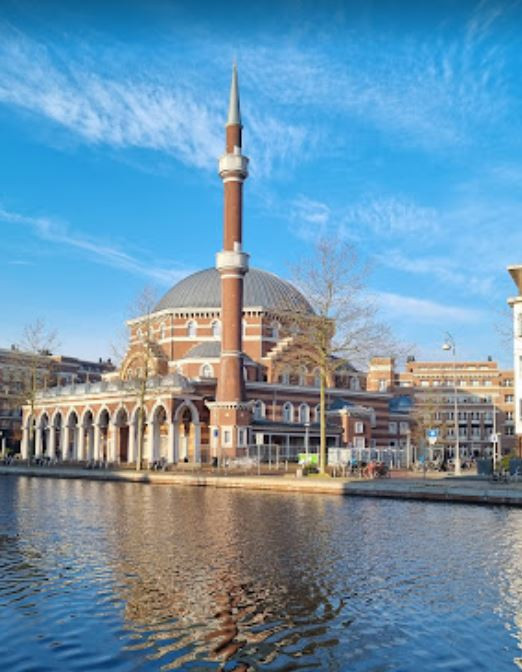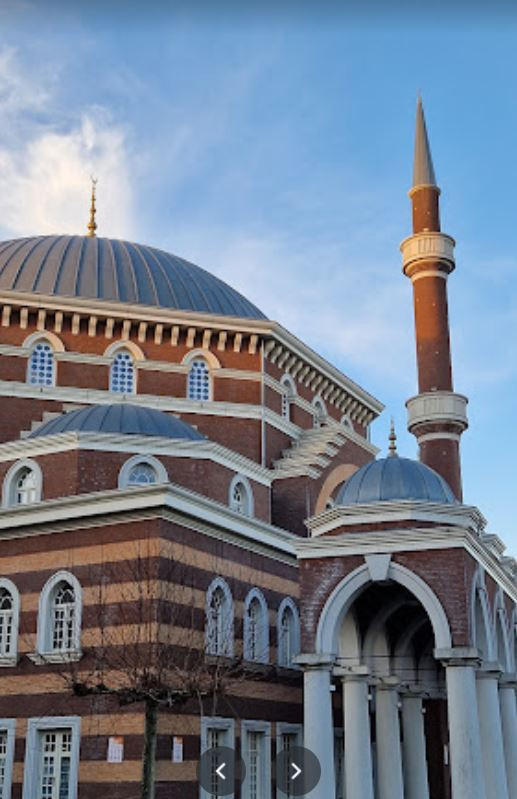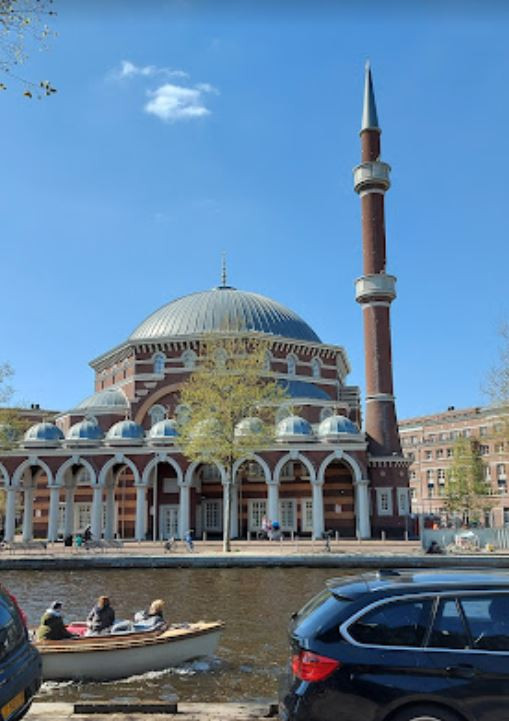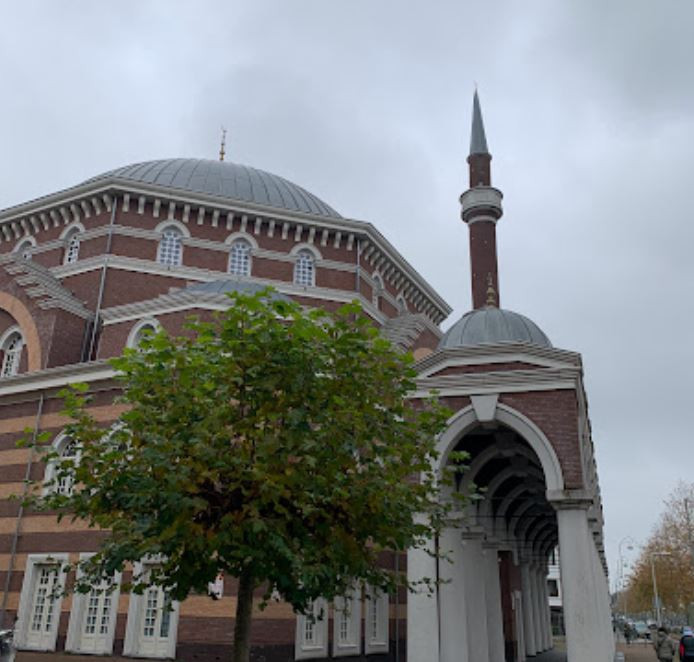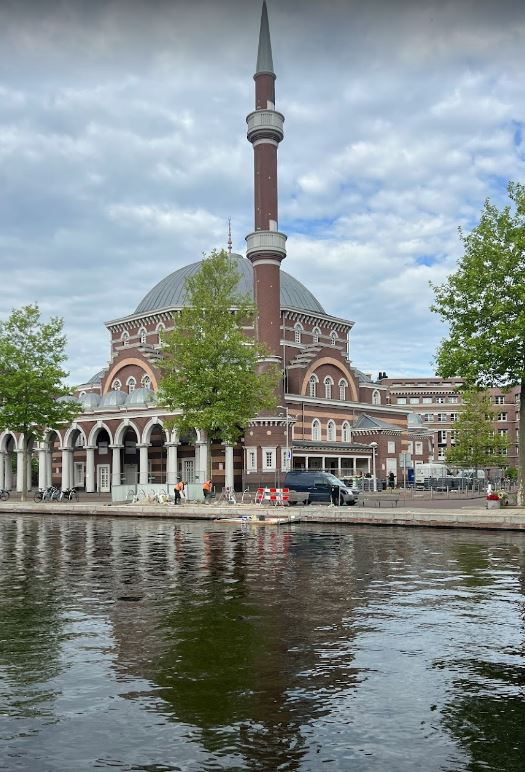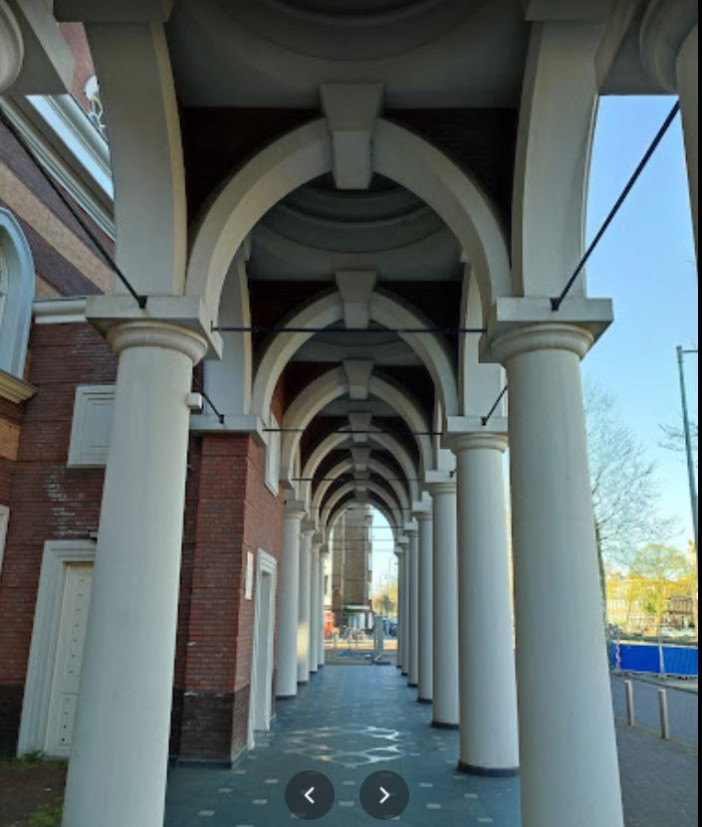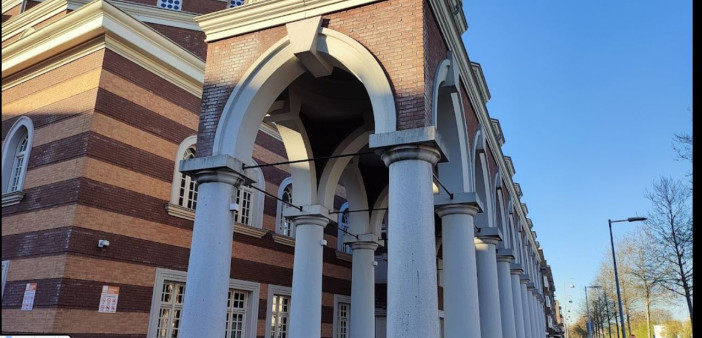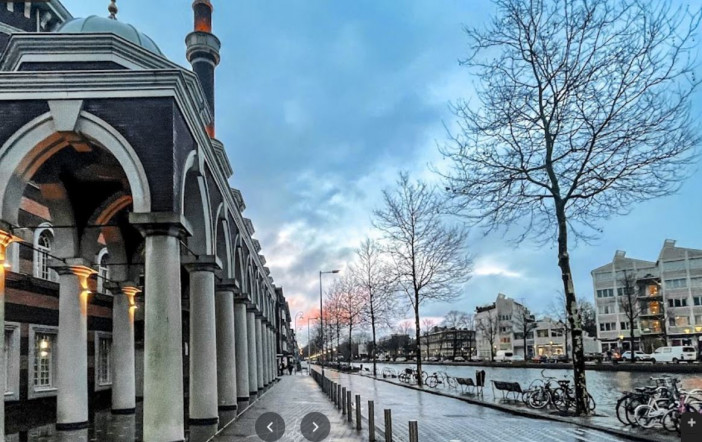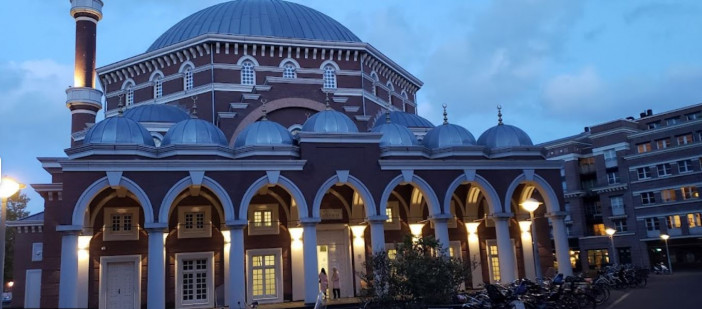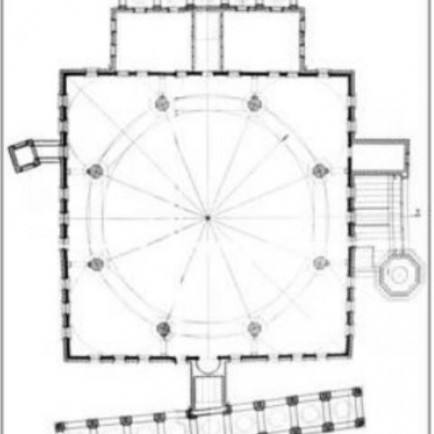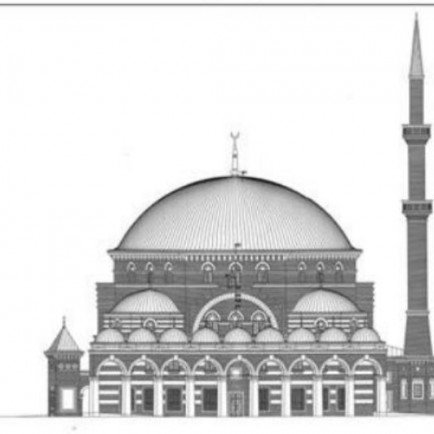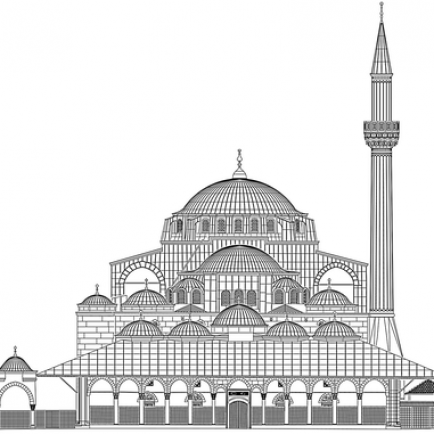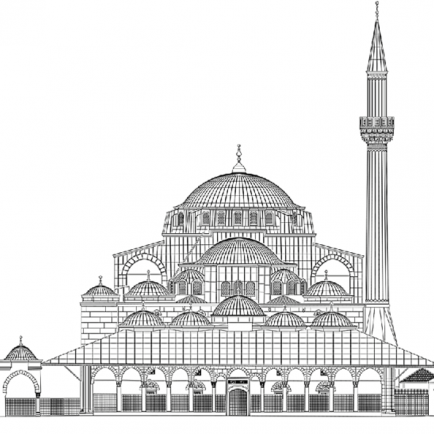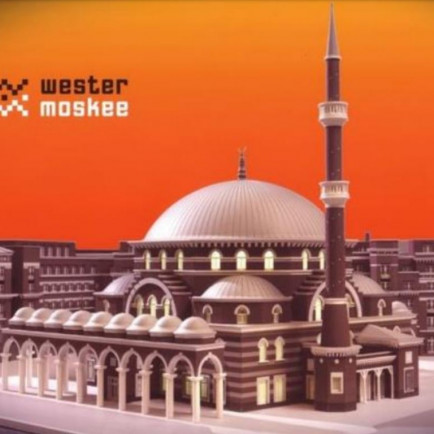Western Mosque Ayasofya Camii
History
The patron of The alleged orientalist Westermosque was a Dutchman of Turkish origin, Üzeyir Kabaktepe, whose aim was to establish a contemporary representation of the Milli Görüş movement of which he was the local leader. The public sphere in Turkey , idealizing the religious heydays of Ottoman empire and rejecting the secular - republican ( or ' Kemalist ' ) downplay of overly Islamic behavior and the role of religious institutions in public space . Thus , Kabaktepe looked for the grandest representation of Ottoman grandeur and creativity, leading his French architect, Marc Breitman, away from any Byzantine forms suggested by him, towards the main aspects of the Selimiye Mosque in Edirne, Turkey, aiming to create a similar traditional mosque complex (or 'Külliye') to be financially maintained by the exploitation of shops . Meanwhile, he dismissed any modernization or stylization of Ottoman architecture, since this had been applied by his opponents in the Netherlands, the mosque leaders associated with the Turkish Dutch Islamic Foundation that was sponsored by the Turkish government. In fact , he took his designer to see some prominent examples of Turkish Dutch Islamic Foundation mosques , explicitly showing him what not to do. He even ruled that in a genuine Ottoman mosque, shops should be kept away from the sacrality of the main prayer building thereby becoming more Ottoman than the Ottomans ever were themselves . The only thing he allowed for, under heavy pressure of the municipal government, was the use of Dutch bricks, but only since he reasoned that brickwork could also be found in Ottoman mosques. However, when his ties with the European headquarters of Milli Görüş in Germany (which was suspected of being opposed to integration).
Urban and Architectural
Based on Ottoman models, a standardized and much-used model for a dome and minaret that could be recognized as Turkish and modern at the same time.
Description
References
https://www.researchgate.net/publication/335228257_The_myth_of_the_orientalist_mosque_Towards_an_iconography_of_Islamic_architecture_in_the_Netherlands
Details
Location
Piri Reïsplein, 1057 HB Amsterdam, Netherlands
Architect Name
Year of Build
2005
Drawings
Map
History
The patron of The alleged orientalist Westermosque was a Dutchman of Turkish origin, Üzeyir Kabaktepe, whose aim was to establish a contemporary representation of the Milli Görüş movement of which he was the local leader. The public sphere in Turkey , idealizing the religious heydays of Ottoman empire and rejecting the secular - republican ( or ' Kemalist ' ) downplay of overly Islamic behavior and the role of religious institutions in public space . Thus , Kabaktepe looked for the grandest representation of Ottoman grandeur and creativity, leading his French architect, Marc Breitman, away from any Byzantine forms suggested by him, towards the main aspects of the Selimiye Mosque in Edirne, Turkey, aiming to create a similar traditional mosque complex (or 'Külliye') to be financially maintained by the exploitation of shops . Meanwhile, he dismissed any modernization or stylization of Ottoman architecture, since this had been applied by his opponents in the Netherlands, the mosque leaders associated with the Turkish Dutch Islamic Foundation that was sponsored by the Turkish government. In fact , he took his designer to see some prominent examples of Turkish Dutch Islamic Foundation mosques , explicitly showing him what not to do. He even ruled that in a genuine Ottoman mosque, shops should be kept away from the sacrality of the main prayer building thereby becoming more Ottoman than the Ottomans ever were themselves . The only thing he allowed for, under heavy pressure of the municipal government, was the use of Dutch bricks, but only since he reasoned that brickwork could also be found in Ottoman mosques. However, when his ties with the European headquarters of Milli Görüş in Germany (which was suspected of being opposed to integration).
Urban and Architectural
Based on Ottoman models, a standardized and much-used model for a dome and minaret that could be recognized as Turkish and modern at the same time.
Description


